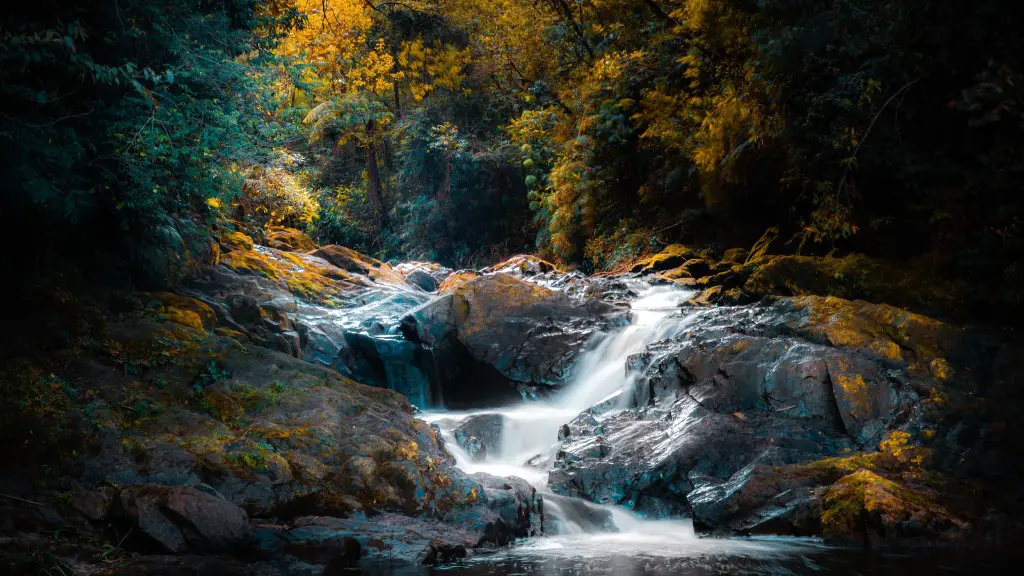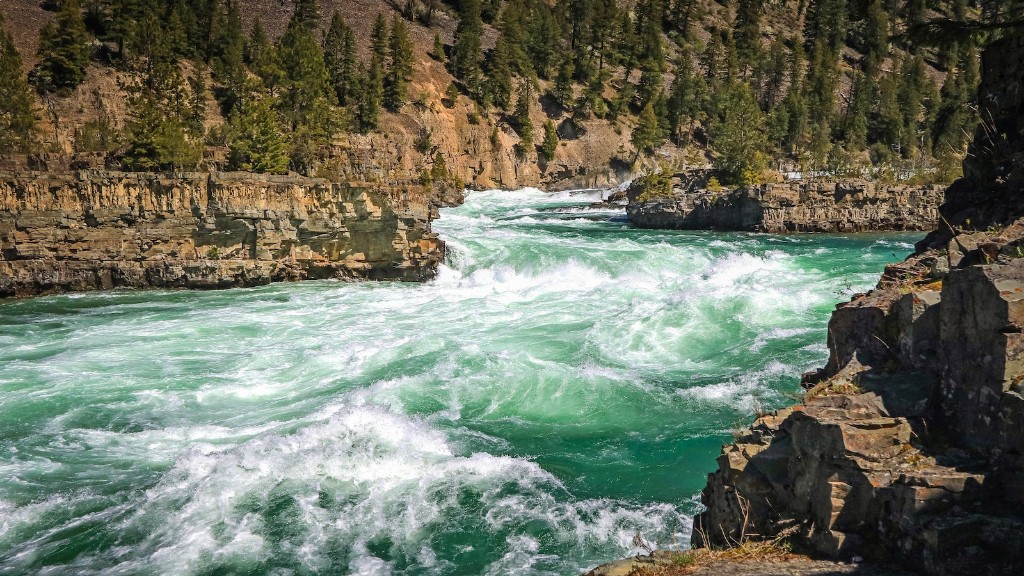China’s Yangtze River, which originates in the Qinghai-Tibet plateau and traverses a vast region of China, is the busiest and most important inland waterway in the world. Every year, millions of tons of cargo are transported along its winding course to facilitate the region’s impressive economic growth.
Given the Yangtze River’s tremendous importance and the unpredictable nature of Chinese weather and the geography of the region, it is crucial that the Yangtze is effectively regulated and allowed to maintain a steady course. One way that Chinese authorities and engineers have sought to do this is through the use of dams. By using a dam or series of dams, authorities are able to regulate the flow of the river and maintain a steady course, particularly during periods of heavy flooding and high rainfall.
The most famous dam on the Yangtze is the Three Gorges Dam, located in the Hubei province. Built at a cost of over $22 billion, the Three Gorges Dam is both the world’s largest hydroelectric power plant, providing 22.5 gigawatts of power, and the world’s largest water storage and flood control project. The dam is a much-needed solution to the problems associated with the traditional system of levees, which are expensive to maintain and cannot adequately handle the volume of water that comes down the Yangtze in times of heavy rain.
The dam generates much of its power from a series of 32 giant turbines, which are capable of capturing the river’s fast-moving current. In addition to providing hydroelectric power, the Three Gorges Dam is also used for flood control by storing water during high-flood-risk times, releasing it when the danger has passed. This flood-control system effectively reduces the chances of fatalities and damage to properties during a flood event.
Aside from the Three Gorges Dam, there are also several other dams in China which are used to regulate the Yangtze River. For example, the Gezhouba Dam is a large hydroelectric power station that produces around 8.7 gigawatts of energy, while the Xiangjiaba Dam is used to generate more than 3.6 gigawatts of energy. These dams, along with the Three Gorges Dam, have been instrumental in providing a much-needed solution to the flooding and potential for disaster posed by the river.
The government of China has also been investing heavily in other infrastructure projects designed to improve water management and manage the Yangtze River more effectively. For example, the country has invested billions of dollars in deep tunnels and underground reservoirs, which are designed to provide a steady flow of water and reduce the risk of flooding during periods of heavy rain.
The Chinese government has also been investing in water conservation efforts by building desalination plants, which are used to convert sea water into fresh drinking water, and water recycling systems, which are used to recycle wastewater. These efforts have had a significant impact on the environment, providing desperately needed freshwater resources and helping to reduce water pollution.
Impact of Yangtze River Dam on Surrounding Areas
The construction of dams along the Yangtze River has had an undeniable impact on the areas surrounding it. For example, the construction of the Three Gorges Dam has led to the displacement of up to two million people living in the flooded areas upstream. The disruption of the riverspace has also drastically impacted the environment downstream, with local wildlife populations being significantly impacted and water pollution becoming increasingly ingrained in the local ecosystem.
As well as the displacement of people and pollution, the construction of the Three Gorges Dam has also had an impact on the former landlocked province of Chongqing. Thanks to the dam, the province was opened up to shipping and has become a major transportation hub, greatly contributing to the region’s wealth and economic development.
However, one of the biggest concerns with the Three Gorges Dam is the potential for a major flood, which would have devastating consequences downstream. While the Chinese authorities have implemented strict preventative measures and flood-control regulations, it is impossible to completely eliminate the risk of a major flood occurring.
Analysis of the Government’s Strategy
The Chinese government’s strategy to regulate the Yangtze River has been widely praised by experts. By investing in infrastructure projects such as dams, deep tunnels and underground reservoirs, the government has been able to ensure that the river remains stable and less prone to dangerous flooding.
At the same time, the government’s conservation efforts have greatly improved the water quality of the Yangtze River and the local environment as a whole. By investing in desalination plants, water recycling systems and other innovative solutions, the government has been able to make a significant impact on the region’s environment.
However, there is still much work to be done in terms of the environment and the economic well-being of the region. The Three Gorges Dam and its associated infrastructure have come at great cost, both economically and environmentally, and more needs to be done to ensure a balance is struck between economic growth and environmental sustainability.
Environmental Concerns
The construction of dams along the Yangtze River is not without its environmental concerns. The most pressing concern is the potential for causing significant damage to the natural habitat of the region’s wildlife. The changing of the river’s course and the resulting inundation of land has had an impact on the region’s wildlife, with some species becoming endangered or extinct.
In addition, the dams can affect the flow of water downstream and lead to water stagnation and an increase in water pollution. This can have a major impact on the local flora and fauna, with some species of fish, for instance, being highly sensitive to changes in water temperature and polluted water.
Finally, the massive amounts of power generated by the dams also have an effect on the local environment. Dams such as the Three Gorges Dam generate vast amounts of energy and can cause air and noise pollution due to the immense amounts of energy generated.
International Cooperation
The Yangtze River has become the focus of international attention over the past few years, with countries such as the United States, Russia, and Japan joining forces to help protect and manage the river. International cooperation and investment in infrastructure projects have been instrumental in helping to protect the Yangtze Valley and its surrounding areas.
For example, the United States has been instrumental in helping to fund the Three Gorges Dam project and its associated infrastructure projects, which has helped to reduce the risk of flooding and protect millions of people living in the region.
The investment from other countries in water conservation projects has also been invaluable in ensuring the long-term sustainability of the river, with countries such as Japan, Russia and the United States helping to fund desalination plants and water recycling initiatives.
At the same time, the international community has also been instrumental in highlighting the environmental concerns associated with the use of dams and the impact that infrastructure projects have on the local environment. International observers have pointed to the potential for dams to lead to pollution, wildlife loss and habitat destruction, and have urged Chinese authorities to take action to address these issues.
Conclusion
The use of dams to control the Yangtze River is an essential part of the Chinese government’s strategy to ensure the long-term sustainability of the region. By using a combination of dams, deep tunnels, desalination plants and water recycling initiatives, the government has been able to effectively regulate the river and reduce the likelihood of flooding and other water-related disasters.
At the same time, the use of dams and other infrastructure projects has come at a cost, both economically and environmentally. However, with international cooperation and investment, these projects have been able to strike a balance between economic development and environmental sustainability, ensuring that the Yangtze River remains an important economic resource for China and its surrounding regions.





